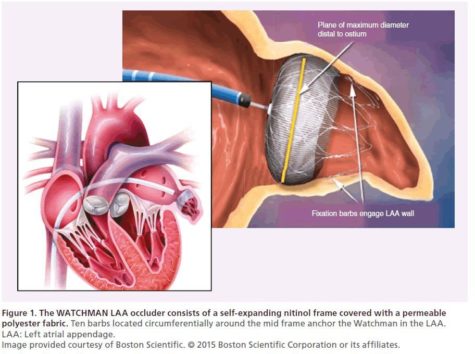Early Intervention can Lead to Prevention Of Postoperative Atrial Fibrillation after Cardiac Surgery
Posterior left pericardiotomy can help reduce new-onset atrial fibrillation is suggested by a late-breaking science presented by prominent researchers and cardiothoracic surgeon Dr. Gaudino at American Heart Association 2021 virtual conference on November 14, 2021.
Atrial fibrillation(AF) is the most common complication after cardiac surgery, and the incidence ranges from 15-50%.1 The incidence of postoperative AF has remained similar over the years. The researchers from the Posterior Left Pericardiotomy for the Prevention of Postoperative Atrial Fibrillation After Cardiac Surgery (PALACS) trial built upon the prior smaller studies suggesting posterior left pericardiotomy may decrease new-onset postoperative AF.2 It is an adaptive, single-center, single-blind randomized controlled trial at New York-Presbyterian Hospital.
The trial included patients undergoing coronary artery bypass grafting (CABG), aortic valve and/or aortic surgery with no history of prior AF or other arrhythmias. These patients were started on beta blockers post-procedure. The trialists screened 3601 patients and included 420 patients for randomization with posterior left pericardiotomy vs. no additional intervention. The patients were followed only during the inpatient hospitalization for primary and secondary outcomes. Interestingly, the incidence of new-onset AF was remarkably lower in the intervention group (18% vs. 32%, Relative risk (0.55), p:<0.001) compared to the no intervention group. The authors also report that the need for postoperative antiarrhythmic medications and systematic anticoagulation was considerably lower in the intervention group. However, the length of hospitalization was similar in both groups. Similarly, there was no difference in mortality.2
The decrease in the incidence of postoperative AF can be attributed to lower postoperative pericardial effusion with the posterior left pericardiotomy. This small incision created a pathway for the drainage of the pericardial fluid to the pleural area, thereby inhibiting the inflammatory pathway and atrial remodeling, which could cause AF. Prior to this, many other therapeutic interventions with antiarrhythmic medications have been studied for the potential preventive strategy of AF. Nevertheless, this is a novel surgical technique with potential for future implications.
It is noteworthy, PALACS is a single-center trial with no hard clinical outcomes and comes with limitations. Evaluating the sample size, the mean age of the population was 61 years, and 24% of the participants were women. The mean CHA2DS2VASc score for the sample was 2. An important aspect of the trial is only the inpatient follow-up of the participants; there is a small subset of patients who may develop AF even after four weeks of discharge. The design of the trial is intuitive and aims for a proof of concept regarding the surgical technique.
Dr. Subodh Verma, a prominent researcher and cardiothoracic surgeon from the University of Toronto, says, “Congratulations to the authors and investigators, this well-conducted surgical trial provides convincing proof of concept that a simple, inexpensive, generalizable, surgical adjunctive procedure of pericardial drainage can safely reduce postoperative AF after cardiac surgery” at the AHA21 while discussing the study.
References:
- Verma A, Bhatt DL, Verma S. Long-Term Outcomes of Post-Operative Atrial Fibrillation. Journal of the American College of Cardiology. 2018;71(7):749-751.
- Gaudino M, Sanna T, Ballman KV, et al. Posterior left pericardiotomy for the prevention of atrial fibrillation after cardiac surgery: an adaptive, single-centre, single-blind, randomised, controlled trial. The Lancet.
“The views, opinions and positions expressed within this blog are those of the author(s) alone and do not represent those of the American Heart Association. The accuracy, completeness and validity of any statements made within this article are not guaranteed. We accept no liability for any errors, omissions or representations. The copyright of this content belongs to the author and any liability with regards to infringement of intellectual property rights remains with them. The Early Career Voice blog is not intended to provide medical advice or treatment. Only your healthcare provider can provide that. The American Heart Association recommends that you consult your healthcare provider regarding your personal health matters. If you think you are having a heart attack, stroke or another emergency, please call 911 immediately.”






